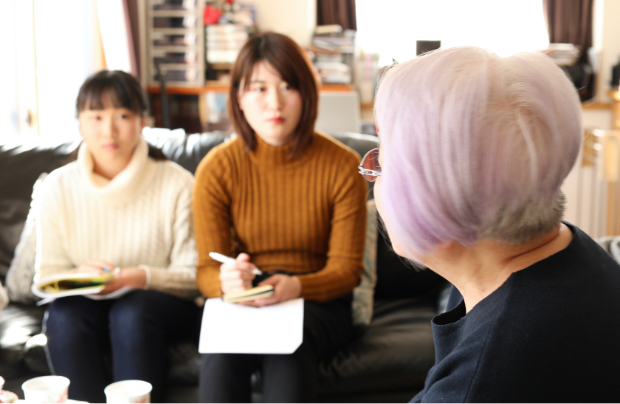HIROSHIMA memory keepers Pass down a story
Vol. 14 2019.6.4 up
I have determined to keep on speaking out to the whole world, for the rest of my life, about how horrible radiation is.
Mitsuo Kodama
A-bomb survivor
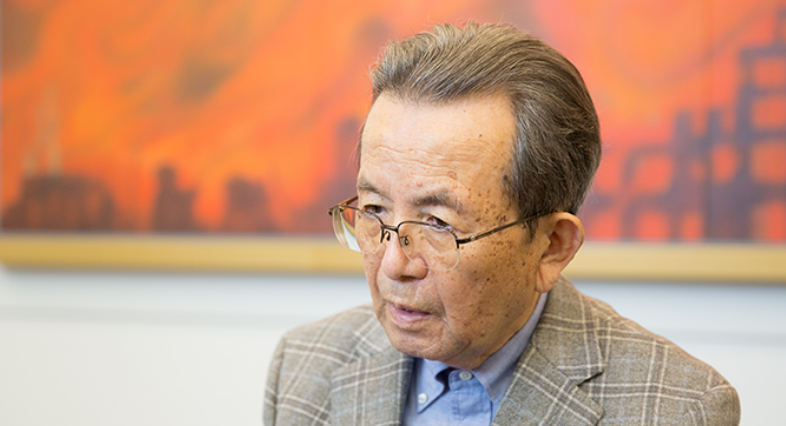
What do people handing down their experiences of the A-bombing think and try to convey?
When the A-bomb exploded over Hiroshima, Mr. Mitsuo Kodama, 85, was at the Hiroshima First Middle School (now the Hiroshima Prefectural Kokutaiji High School), which was only 800m away from the hypocenter, where he was exposed to a large amount of radiation.
He has had 21 surgical operations for cancers so far. He has been telling people about how horrible radiation is through his story of chromosomal abnormality.
Section
About August 6
Could you tell us what happened to you on August 6?

I was a student of the Hiroshima First Middle School.
I lived in Deshio-cho, Naka-ku, Hiroshima.
As the war situation worsened and more and more cities were bombed, my family and I were evacuated to Hesaka,about 7km away in the suburbs, where a friend of my father’s lived.
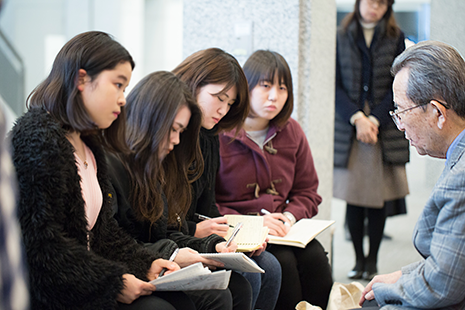
We were staying in the detached room of his house.
On August 6, I walked to school from Hesaka.
My school was located only 800m away from the hypocenter.
It was a beautifully clear hot day.
When a B-29 reconnaissance plane came flying over Hiroshima and an air raid alert sounded at 7:09, I was on the way to school.
The air-raid alert was cleared at 7:31.
However, the reconnaissance plane had telegraphed a message, saying that the sky was clear over Hiroshima, which determined Hiroshima’s fate.
In those days, middle schools had five school years.
The second- to fifth-year students of my school had been mobilized to work in the nearby munitions factory since June that year.
So, most of those who were at school on August 6 were first-year students. At a little past 7:30, the morning assembly started with 307 out of the 320 first-year students who had arrived at school that morning.
Then we were divided into two groups by the class number. The students of odd-number classes were told to work outside, and the ones of even-number classes were to study in their classrooms by themselves.
This was the first turning point in my life.
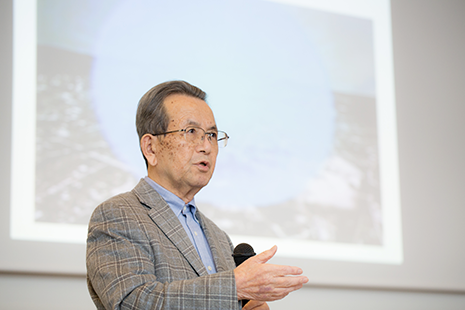
I was in an even-number class and was studying in the classroom.
After a while, I heard a B-29 bomber plane, but no air raid alert sounded that time.
I was puzzled, but assumed that it would be an American plane which had often come flying over us to drop fliers telling us to surrender.
I was about to go out of the classroom with friends to pick up those fliers when I saw some classmates gathering around a comic book which someone had brought to school.
I wanted to join them to read it and went back to the center of the room.
At that moment, I felt as if a giant column of fire fell on the school courtyard.
I wouldn’t have survived the A-bombing if I had gone out of the classroom or had been by the window.
What did you see after the A-bombing?

I don’t know how long I was unconscious. When I came to, I heard voices calling for help.
I thought our school had been targeted and bombed and that some rescue people would come soon.
I couldn’t have known that the A-bomb was dropped and devastated the entire city.
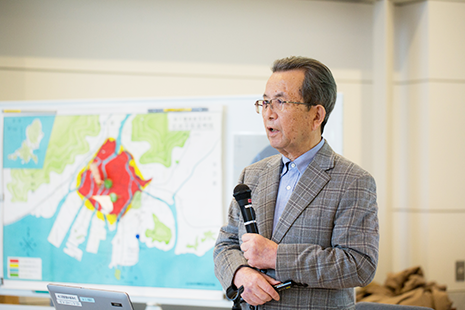
I was lying in the dark for some time. Then I saw a faint light in the ceiling of the collapsed school building.
I groped my way toward the light, broke through the ceiling and got out.
To my surprise, the whole building of the Chugoku Haiden (the present Chugoku Electric Power Company) in front of our school was in flames.
I tried to rescue as many friends as possible, but I was able to help just a few of them.
The spreading fire was coming close to us, and other students still remained trapped under the collapsed school buildings.
With the smell of approaching smoke, they seemed to give up hope to survive.
I heard them shouting loud, “Long live the Emperor!” or “Hurrah for the Hiroshima First Middle School!”
I still remember the moment I had to leave them behind, which broke my heart.
Those schoolmates were burned alive and died in agony, not knowing why they had to die. Now, I feel like their voices are giving me a supportive push for my activities.
On leaving the school, I tried to flee to Hijiyama, but seeing the raging fire in the way, I gave up the idea and set out toward the south.
On the way, I saw swarms of injured people at the Hiroshima Red Cross Hospital.
I also saw a dead mother shading her baby, a dead body with his or her eyeballs popped out and a soldier desperately trying to stand using his rifle as a cane.
Seeing those people, I was aware that Japan was certainly defeated.
About the aftereffects of exposure to radiation
I understand that you were exposed to radiation when you were in a wooden, one-story tile-roof school building, which was located 876m away from the hypocenter.
Did you have any aftereffects soon after the A-bombing?

Yes, I did. I could hardly stand. So, in order to find a way to escape from the fire, I had to make a concerted effort to walk. When I saw Tanna Station on the Ujina Line after the long difficult walk, I felt secure somehow and fell down losing consciousness.
My memory is foggy but I think there were a lot of people lying down unconscious all over the place.
Among those people, I was fortunately rescued by an old woman.
She was a farmer living nearby and took me to her house.
When I regained consciousness there, she gave me some cold well water.
How good it was!
It made me come to life and probably saved my life.
I felt as if I met a Buddha in hell.
She told me she had a nephew who was a third-year student of the same middle school as mine.
Seeing me wearing the same school uniform as her nephew’s, she wanted to ask me if I knew how and where he was.
I rested there until the late afternoon and went back to my family in Hesaka.
When I looked toward Hiroshima City from Hesaka Station, the sky over Hiroshima was blazingly bright.
Back home in Hesaka, I slept on senselessly for three days.
Then I became able to walk by myself.
On August 10, my cousin living in the country came to Hiroshima to search for his friend in Hiroshima.
I went to Hiroshima Station to meet him there.
On arriving at the station, I suddenly felt sick and started to throw up again and again.
My cousin took me back to Hesaka, but once back home in Hesaka, incredible as it may sound, I didn’t feel sick anymore.
I wonder if it was caused by residual radiation.
Then, I continuously suffered different symptoms, such as hair loss, bleeding from the gums, from the eyes, from the nose and from the ears, hemorrhagic stool, hematuria, and a high fever of more than 39 degrees.
On August 16, I developed purple spots over my upper body and pus formed on my left ankle.
On August 20, I had a high fever of 42 degrees, and the doctor told my family that there was nothing to do to save my life.
In those days, general practitioner doctors had no knowledge about diseases affected by radiation, so they often mistakenly diagnosed them as typhoid fever.
A rumor spread that the A-bomb was poisonous.
In Japanese folk remedy, dokudami-so, or Houttuynia cordata, is believed to get rid of toxins in our bodies.
My mother made a decoction from dried dokudami-so.
For the wounds containing pus, she steamed fresh dokudami-so and applied it to my wounds to draw out pus.
There were very few A-bomb survivors who were in the area within 1km radius from the hypocenter.
I am a lucky person! Thanks to my family’s care, I survived the A-bombing.
You said that your body was harmed by radiation. Would you be more specific?

Fortunately, people have saved me wherever I was.
Thanks to those people, I was able to survive, and I am here now.
However, my body was badly harmed by the radiation I was exposed to so close to the hypocenter.
Radiation is an invisible lethal weapon.
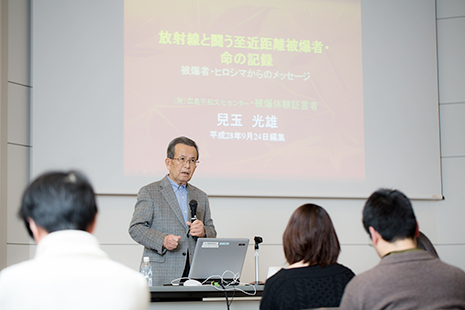
When I was around 60 years old, I started to develop different cancers one by one, such as rectal, stomach, skin, and thyroid, and what was worse, those cancers were overlapping, not metastasizing. The cells of my organs and skin damaged by A-bomb radiation were changing into cancerous tumor cells. For those individual cancers, I have had 21 operations so far.
First, I was diagnosed as having rectal cancer. Two tumors of the stage 3 and 4 were found. At that time, I deeply realized that radiation was really horrible.
I was told for the first time that the structure of my chromosome had been altered due to the large dose of radiation I had been exposed to, which is to be estimated 4.6Gy even though 4.0Gy is the median lethal dose to a human.
That dose had harmed cells of my body, causing chromosomal abnormality, such as translocation.
Once cells are damaged by radiation, chromosome aberrations could occur and cause cancer however carefully you control your lifestyle.
For some time after the A-bombing, we didn’t have any information about the A-bomb or radiation at all because of the Press Code for Japan.
Many of the people who had survived the A-bombing died of diseases associated with radiation, such as leukemia.
Nevertheless, the cause of their diseases was simply said to be unknown.
When I developed those cancers, I thought that I was being punished.
I hadn’t done anything for my school mates who died writhing in agony in our A-bombed school.
They died from the aftereffects of the A-bombing, not knowing what it was.
This was also my turning point, and at 65 I started telling my A-bomb experiences.
His messages to the future generations
Has anything changed for you after you starting telling your story?

I didn’t know why, but I felt invigorated.
In 2016, I gave a testimony at the RADIATION RESEARCH SOCIETY Annual International Meeting in Hawaii.
Speaking to the audience there, I felt convinced that when I talk to people face to face, they will surely understand how horrible the A-bomb and radiation are.
On the other hand, however, I felt I had yet to be fully competent to convey my experiences.
I am strongly regretful for my schoolmates who died in agony at that time and after the A-bombing.
I am still alive mentally, supported by those late schoolmates.
I believe it is my mission to let the world know what happened in the A-bombing and how horrible the A-bomb and radiation are, even just a little.
No more people should have to live bearing hardship like me.
Now, it is my duty to convey my experiences.
In the process of conveying your experiences, what messages would you like to pass on to the third generation like us?
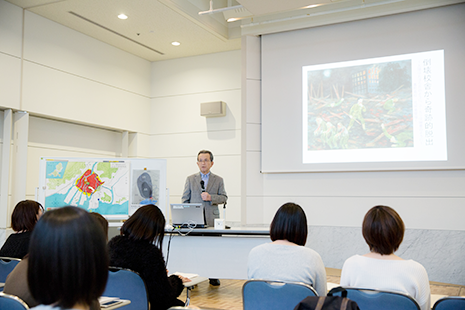
The A-bomb, which is still torturing us even more than 70 years later, is the most inhuman thing in human history. Moreover, very few people know how harmful radiation is.
When I was exposed to the A-bombing and radiation 73 years ago, radiation damaged my stem cells and took time to prevent them from producing healthy blood.
When cancer was found in my left kidney and an operation had to be done, and the number of my platelets was found to be abnormally small.
Doctors searched for the cause and found that I had myelodysplastic syndrome (MDS.)
My blood factory had been broken. I had become infertile.
I learned through my own experiences that radiation was such a horrible thing.
It is not visible and ordinary people don’t know how horrible it is.
Due to nuclear tests and nuclear accidents, more and more people are being exposed to radiation around the world.
People should know this fact. Humankind will become extinct if things go on this way.
Nuclear energy and humankind cannot coexist. We must not make anyone else suffer like me.
I have determined to keep on speaking out to the whole world, for the rest of my life, about how horrible radiation is.
Interviewed on August 2018.
About
"Interviews with HIROSHIMA memory keepers" is a part of project that Hiroshima「」– 3rd Generation Exhibition: Succeeding to History
We have recorded interviews with A-bomb survivors, A-bomb Legacy Successors, and peace volunteers since 2015.
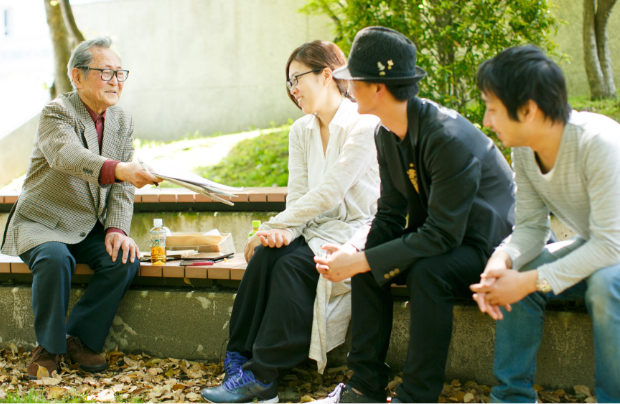
What are Hiroshima memory keepers feeling now, and what are they trying to pass on?
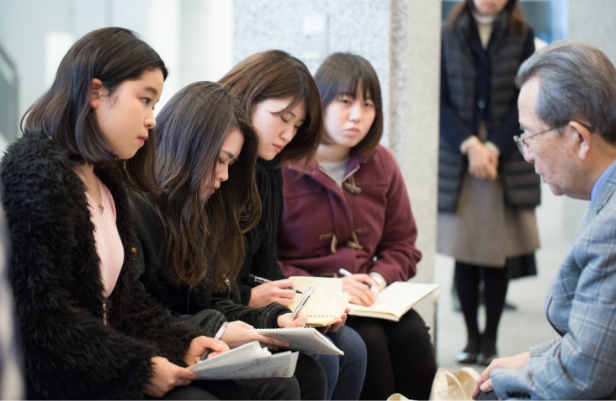
What can we learn from the bombing of Hiroshima? What messages can we convey to the next generation? Please share your ideas.
